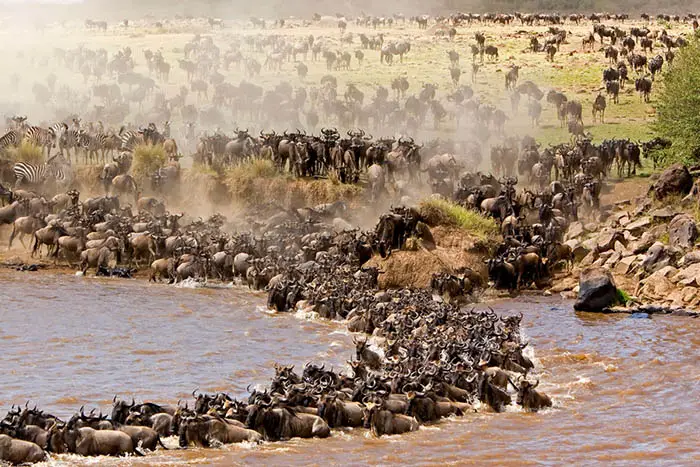The Europe-Asia continent has created by the Eurasian plate while the North America continent has created by the North American plate. The intersection of these two different tectonic plates of the Eurasian and the North American can be seen in the Thingvellir National Park in Iceland. This is actually a divergent tectonic boundary named as Silfra fissure. Since this tectonic boundary has filled with water, you need to dive about 100 m to see this unusual land formation. These two different plates are moving away from each other by 2 cm every year. When the earthquake occurrence, rock boulders and rocks fall into the bottom of the crack, then this falling rocks and boulders eventually get stuck between the narrow parts of the cracks and have other stones stack on the top form caves and tunnels inside the fissure. Depths of the fissure is also changing over the time due to this falling rocks stacked on the bottom of the crack.

The water that has filled in the Silfra fissure is coming from Iceland’s second-largest glacier known as “Langjökull”. Langjökull glacier melts in the springtime and slowly release water to the Silfra fissure in the Thingvellir national park which is 50 km away from here.
The running water of the Langjukul glacier travels through the Earth and pushes through the underground holes towards the Silfra fissure. During this transportation, the water in the glacier passes through rock layers, so the rock particles naturally filter the water. Therefore fissure filled water is crystal clear. So Silfra fissure is famous for the place where one of the most transparent waters on the Earth. Sunlight penetrates until the bottom of the crack creating top to bottom visibility in the day time.
This place is trendy among deep water divers, and Scuba divers as the water temperature are around 2° to -4 ° Celsius with visibility almost from end to end.
Since the Langjökull national park has this amazing tectonic plates encounter together with Silfra fissure, it has been designated a UNESCO World Heritage Site.






